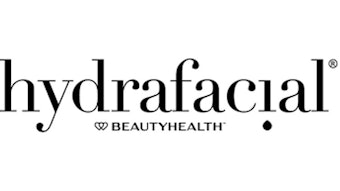How much thought is really given to supply chain planning? In truth, rarely is it seriously analyzed in business planning. In a well-planned supply chain, your logistics solutions support, enhance and allow your business to thrive. However, most businesses find their supply chains bleeding out profits and tying up valuable resources. This is not the fault of the supply chain, but rather due to lack of planning and knowledge from human direction. It is human nature to bandage problems for a rapid fix, like falling into the “truck for cheap” syndrome—making rapid transportation decisions based solely on price. Yet that approach to logistics needs is counterintuitive to the health of a supply chain. The supply chain is a complex entity of actions stretched out over time; it should be finessed, molded and strategically manipulated with much forethought. The good news? It is never too late to improve on decision-making.
What follows are a few key planning points applicable to the budding entrepreneur forging new frontiers or the seasoned veteran looking to tighten spending.
Evaluate Performance
Begin by creating a rating program for your company. Consider having internal reviews with staff if your existing process includes multiple individuals utilizing numerous carriers. A simple survey will best gauge the most problem-free relationships. Create a standard scorecard or matrix that is transferable throughout departments: customer service, sales reps, finance, etc. Then plan to rate on multiple levels: delivery costs, timeliness, customer service, ease of claims processing (it is inevitable) and overall shipment transaction.
If your business is newer, the scoring provides a basis for decision-making when choosing a full solution provider. As a long-time manufacturer, the rating will help carriers compete for your business.
Planned Packaging is Cost Savings
In the beauty industry, image marketing drives demand, and shelf aesthetics help close the sale. To protect these investments, you should also consider your packaging options from a supply chain perspective. What materials are the most durable for long hauls and long-term inventory; which have the strongest sealant for liquid containment; which are lightweight enough to minimize transportation costs?
Beauty and cosmetics products can be a delicate business, one that needs to be protected with durable packaging. This includes inner packs, outer packs, shrinking, wrapping, etc. A packaging assembly as well as packaging choices should reflect the weight distribution, changes in temperature, intensity in moisture or humidity, and typical jolting that product may be subjected to. If it is a design-driven product, take extra care to protect the integrity of the investment—minute scratches and bumps will be detrimental to brand image and therefore cost millions. Too many companies have learned the hard way that design must be functional when placed in the warehouse setting.
Although packaging durability for parcel and display may be considered, some small- to medium-sized businesses fail to consider what palletizing can change. Do you know, with absolute certainty, your pallet stability over the course of a day? A week? A year? Find a good packaging consultant, or consider your own battery of tests for weight distribution, stability, handling, and forklift and pick/pack movement.
Regardless of the size of the business, there is no reason not to conduct time tests, both for the outers’ durability and the pallet’s stackability. Remember to test in consideration of long-term warehousing, and note any stress points that could become problematic in the future.
By planning ahead and developing a packaging and pallet planning strategy, you can actively cut long-term costs. The ability to stack two-high saves on volume pricing transportation and minimizes inventory floor costs in outsource warehousing. It also saves costs due to damaged products.
Unique Issues in Warehousing
Beauty companies, on the whole, have increasingly begun adding “best by” dates to their product labels. Many raw materials can spoil, making their delivery time-sensitive. Cosmetic products simply perform better with fresher ingredients. This means logistics providers have to be able to execute a regimented stock rotation program. A high-performing logistics provider will have evidence of its stock rotation system on-hand to ensure that the freshest product is delivered.
As the beauty industry adapts to the continued consumer shift toward online sales, “to-consumer” delivery methods, especially in direct selling, have had to adapt as well. This changes supply chain requirements to include discount rates on high volume parcel and the ability to integrate directly to an e-commerce ordering system. Even if you currently only ship to the retailer, inquire on your provider’s parcel buying power to anticipate future changes. A high-level provider will have no problem integrating a direct ordering system of fulfillment.
Perfumes can also be a unique situation in beauty logistics, and a unique set of considerations must be accounted for. Strong smelling fragrance essences must retain, not leak, their scents. There is the possibility of cross-contamination when disparate scents are warehoused in close proximity. On documented rare occasions, strong scents clustered in high concentration have been known to negatively impact a warehouse staff’s performance. So, it is best to work with a provider with a proven track record in handling fragranced goods.
Combat Fuel Costs Through Consolidation Programs
As you know, fuel costs adversely affect beauty buys. Add that to a bad economy and the industry is witnessing a spending freeze on luxury and beauty items. This is the time to snag those extra pennies through such measures as holding a leaner inventory and depending on a reactive system of replenishment. Eliminating excess consumption of fuel would also enhance the bottom line as well as integrate sustainability practices.
Retailer-driven consolidation programs, offered by a number of logistics providers, are the best ways for mid-size to large businesses to hold a lean inventory and save on transportation costs. While other types of consolidation rely on timing and depend on outside orders, retailer-driven consolidation programs pool a group of manufacturers headed to the same retailer into one single purchase order, maximizing each truckload. By combining orders, the logistics provider can then deliver a full truckload headed to a single distribution center rather than shipping multiple partially loaded trucks, thereby reducing costs and delivery times.
The Beauty of Technology
The ideal logistics provider will deliver full supply chain management with its services and support team yet still allow you to drive the planning through a totally visible technology system. Many top providers have moved to a Web-based system portal that allows companies to log on from anywhere in the world to review their supply chain. This includes the essential capability to place orders, track inbounds and outbounds, and snapshot inventory. Higher level systems will be more reactive to your needs and provide alerts on out of stock products. More tech-savvy providers will give you the control to program e-mail alerts so that you are notified when a self-determined shortage threshold has been reached. These notices allow sufficient reaction time to surges in demand and seamless replenishment with lean inventory.
Making your supply chain work for you requires dedicated planning and attention to details aside from simply delivering your product. Knowledge will allow you to avoid the pitfalls, but a seasoned consultant combined with an experienced logistics provider will work with you to maximize your potential.
Sum-Sum Chan is the director of marketing and communications at CaseStack, a sustainability-focused logistics company, overseeing the to-market strategy and brand building. She previously held the position of marketing director at Hint Mint, a gourmet confectionary company. www.casestack.com; [email protected]










